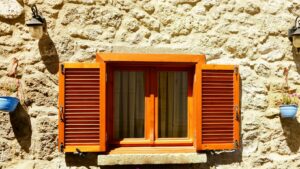Immerse yourself in the charm and allure of the Mediterranean architectural style. With its sun-drenched palette, rustic details, and breezy elegance, it’s a design trend that’s stood the test of time. This style, deeply rooted in the cultures of Spain, Italy, and Greece, offers a unique blend of sophistication and earthiness that’s hard to resist.
Mediterranean Architectural Style
 The intricacies of the Mediterranean architectural style lie in its captivating diversity and the strikingly distinctive elements it incorporates. Born from the history and cultures of Spain, Italy, and Greece, it embodies a rich narrative in every brick, arch, and facade. It’s worth delving into these key features to truly comprehend this timeless design trend.
The intricacies of the Mediterranean architectural style lie in its captivating diversity and the strikingly distinctive elements it incorporates. Born from the history and cultures of Spain, Italy, and Greece, it embodies a rich narrative in every brick, arch, and facade. It’s worth delving into these key features to truly comprehend this timeless design trend.
Typically, red tile roofs define the Mediterranean architectural style, resonating a simple yet chic lifestyle, while the recurring motifs of arched windows and doorways embody elegance wrapped in sophistication. Stucco walls with earthy hues are another defining feature, enhancing the rustic allure of this style.
Lastly, the considerable aspect of this style is its harmony with its surroundings. Mediterranean architecture blends with nature, offering stunning viewpoints for natural landscape appreciation. For example, the terraces, patios, and courtyards are often designed towards a breathtaking view, prioritizing ample sunlight and ventilation.
Distinctive Elements of Mediterranean Architecture
 Within this architectural style, several salient features make it unique and delightful. First, Mediterranean architecture often flaunts a compact and asymmetrical layout, providing a distinct sense of charm. Examples include traditional buildings from Spain, Italy, and Greece that are not symmetrical in design. Second, Mediterranean buildings traditionally used local materials. For instance, builders across the Mediterranean region used limestone, clay, and timber, materials abundant in the area. Third, Mediterranean exteriors display distinct color palettes. Specifically, warm, earthy shades rejuvenate the exteriors, recalling sun-soaked landscapes. Lastly, Mediterranean architecture tolerates the outdoor living, demonstrated by the incorporation of courtyards, balconies, and verandas into designs. These provide ample space for residents to enjoy the region’s benign climate. So, while the allure of this architectural form varies based on locality, these elements tie the rich, diverse histories of Mediterranean architecture together.
Within this architectural style, several salient features make it unique and delightful. First, Mediterranean architecture often flaunts a compact and asymmetrical layout, providing a distinct sense of charm. Examples include traditional buildings from Spain, Italy, and Greece that are not symmetrical in design. Second, Mediterranean buildings traditionally used local materials. For instance, builders across the Mediterranean region used limestone, clay, and timber, materials abundant in the area. Third, Mediterranean exteriors display distinct color palettes. Specifically, warm, earthy shades rejuvenate the exteriors, recalling sun-soaked landscapes. Lastly, Mediterranean architecture tolerates the outdoor living, demonstrated by the incorporation of courtyards, balconies, and verandas into designs. These provide ample space for residents to enjoy the region’s benign climate. So, while the allure of this architectural form varies based on locality, these elements tie the rich, diverse histories of Mediterranean architecture together.
Landscape and Exterior of Mediterranean Homes
The landscape of Mediterranean homes plays an intrinsic role in emphasizing the architectural style’s earthy, cozy character. Mature, native plants dominate, creating a naturally lush, vibrant setting. Olive trees, lavender, rosemary, and citrus trees frequently dot these landscapes, reflecting the region’s signature flora, and providing a sensory experience to the dwellers. Exotic palms and cypress trees often punctuate the skyline, offering a stark, yet harmonic contrast to the home’s horizontal lines. Also, terraces and patios are a common feature, blurring the lines between indoor and outdoor living.
 The exteriors of Mediterranean homes exude rustic elegance, marked by a warm earth toned palette. Low-pitched, red-tiled roofs, arched windows, and thick, textured stucco walls in hues of brown, beige, and crisp white are universally present. Characteristic decorative elements also abound. These may include terracotta tiles, elaborately carved wooden doors, wrought iron balconies, and intricate mosaics, all of them adding a high level of intricate detail and warmth.
The exteriors of Mediterranean homes exude rustic elegance, marked by a warm earth toned palette. Low-pitched, red-tiled roofs, arched windows, and thick, textured stucco walls in hues of brown, beige, and crisp white are universally present. Characteristic decorative elements also abound. These may include terracotta tiles, elaborately carved wooden doors, wrought iron balconies, and intricate mosaics, all of them adding a high level of intricate detail and warmth.
Mediterranean Style Interiors
The Mediterranean architectural style offers a timeless charm that’s rooted in the cultural heritage of Spain, Italy, and Greece. It’s a design that embraces the natural environment, creating a seamless transition between the indoors and outdoors. The rustic elegance of its exteriors, characterized by red tile roofs, arched windows, and warm earth tones, speaks volumes about the region’s rich architectural legacy. Its interiors, though not discussed in this article, carry the same aesthetic ethos, focusing on comfort, functionality, and a deep connection with nature. The Mediterranean style’s enduring appeal lies in its ability to blend sophistication with simplicity, creating homes that are as inviting as they are beautiful. This style’s popularity across the globe is a testament to its timeless appeal and adaptability, making it a worthy consideration for anyone seeking to infuse their homes with a touch of rustic elegance.

